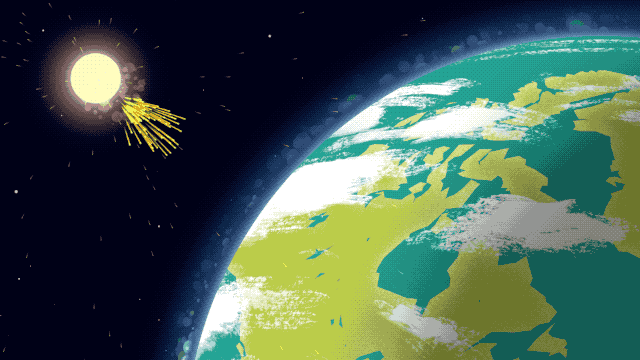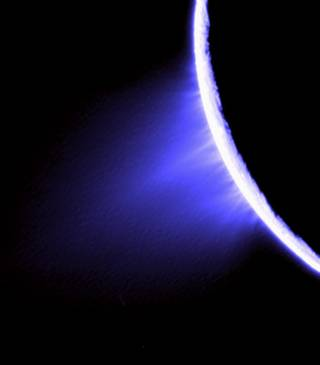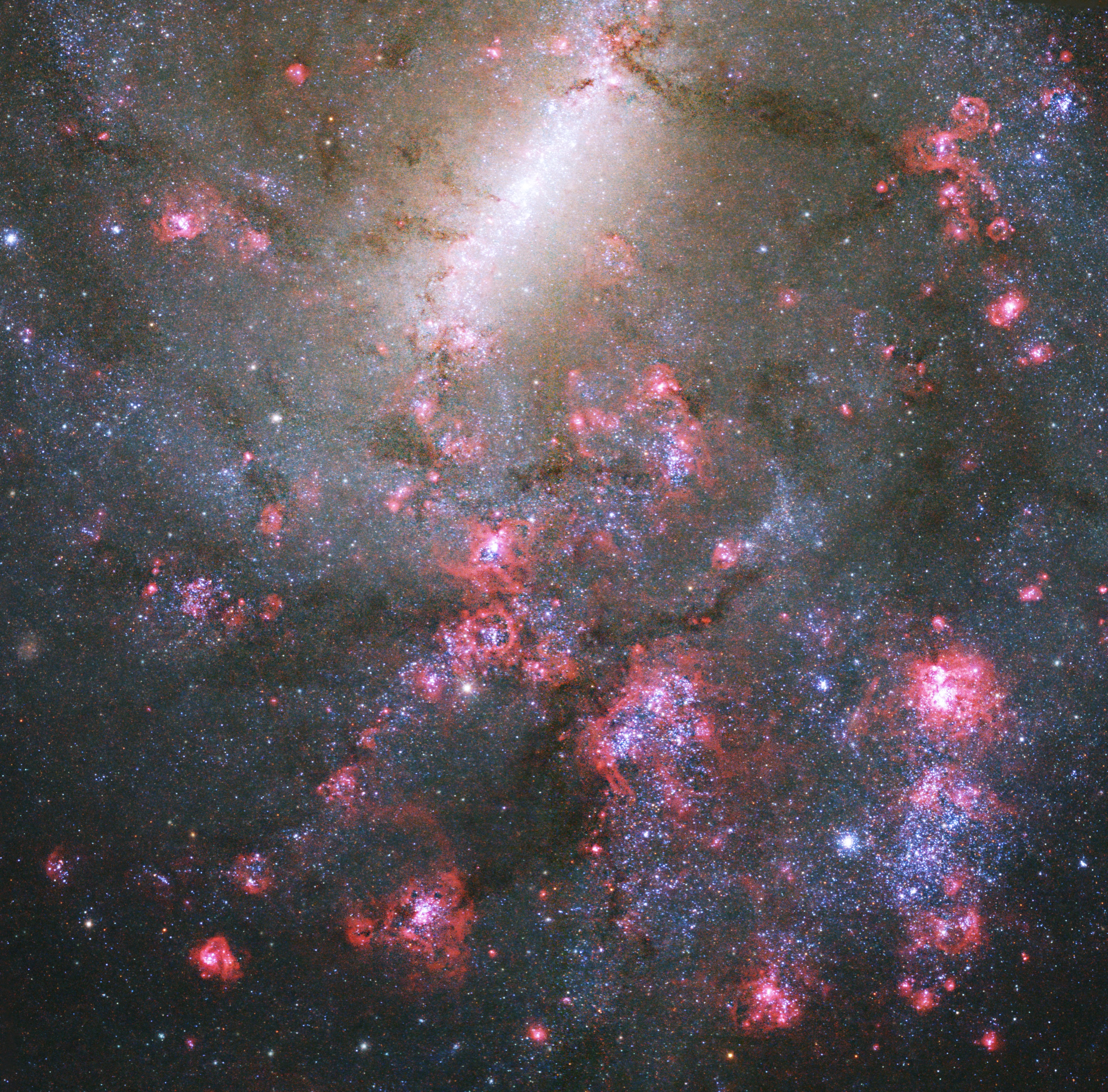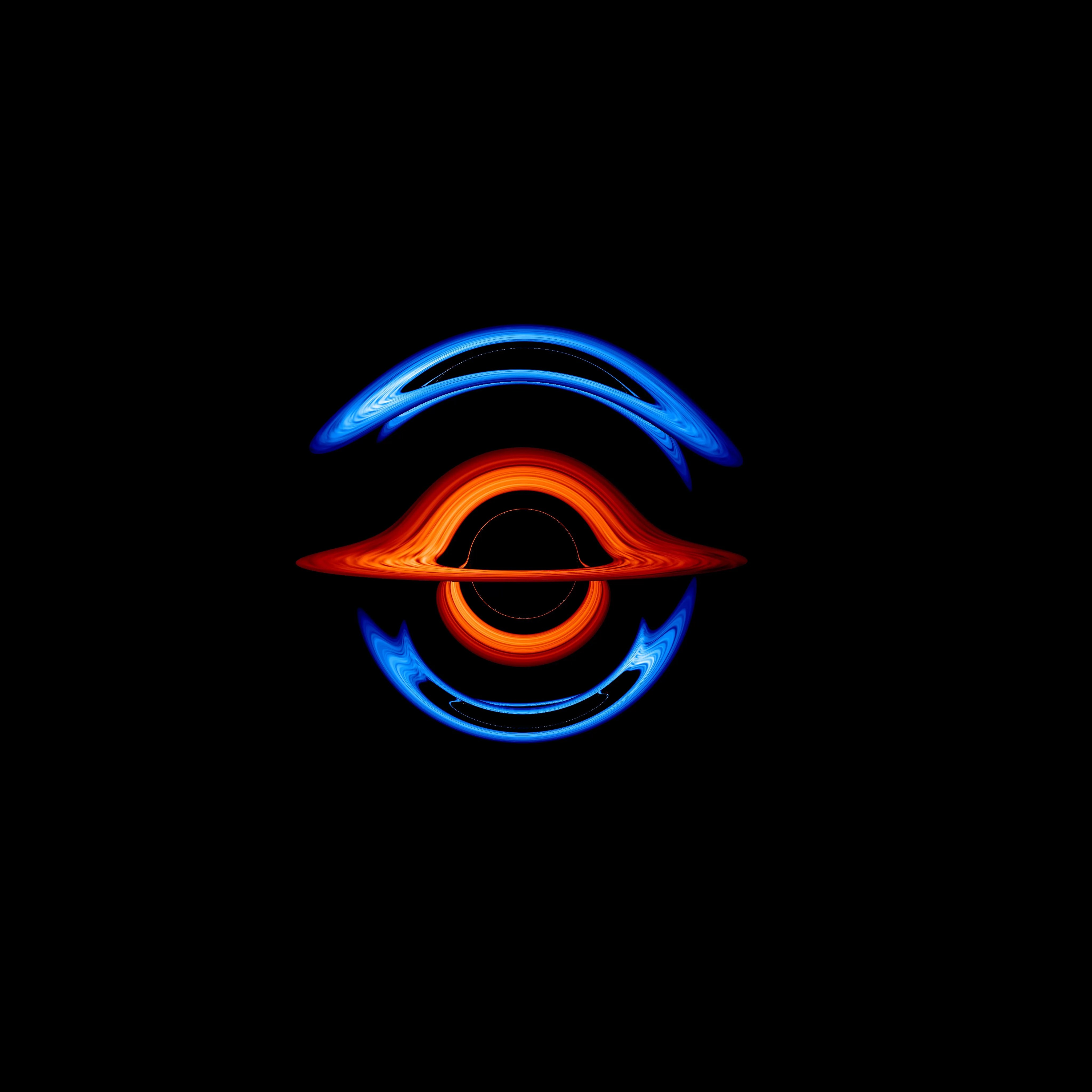6 min read
NASA's Goddard Space Flight Center
Black holes are mystifying yet terrifying cosmic phenomena. Unfortunately, people have a lot of ideas about them that are more science fiction than science. Black holes are not cosmic vacuum cleaners, sucking up anything and everything nearby. But in some ways, Hollywood has vastly underestimated how dangerous black holes really are.
Black holes are superdense objects with a gravitational pull so strong that not even light can escape them. Scientists have overwhelming evidence for two types of black holes – stellar and supermassive – and see hints of an in-between size that’s more elusive. A black hole’s type depends on its mass (a stellar black hole is five to 30 times the mass of the Sun, while a supermassive black hole is 100,000 to billions of times the mass of the Sun), and can determine where we’re most likely to find them, and how they formed.

Let's focus on supermassive black holes for now, shall we? Supermassive black holes exist in the centers of most large galaxies. One example is Sagittarius A* (Sgr A* for short, which is pronounced “Saj A-star”) at the center of our Milky Way. Another is the black hole at the center of galaxy Messier 87, which became famous when the Event Horizon Telescope released its picture – the first image ever captured of a black hole. As the name suggests, both of these are… well, supermassive. Why are they so enormous? Scientists suspect it has something to do with their locations in the centers of galaxies. With so many stars and lots of wayward gases drifting in that neighborhood for them to sweep up, they can grow large rapidly (astronomically speaking).
You may have seen a portrayal of planets around supermassive black holes in the movies. But what would the conditions on those worlds actually look like? What kinds of problems might you face, if you lived there?

1. 100% Chance for Cosmic Winds
“Space weather” describes the changing conditions in space caused by stellar activity. Solar eruptions produce intense radiation and clouds of charged particles that sweep through our planetary system and can affect the technology we rely on, damaging satellites and even causing electrical blackouts. Thankfully, Earth’s atmosphere and magnetic field protect us from most of the storms produced by the Sun.

On the other hand, space weather near a black hole would be much more striking, if that black hole is consuming matter. The showers of radiation and particles could be millions – perhaps even billions – of times stronger than those from the Sun, depending on how close the planet is to the black hole.
Even though black holes don’t emit light themselves, their surroundings can be very bright and hot. Accretion disks – swirling clouds of matter falling toward black holes – emit huge amounts of radiation and particles, and form incredible magnetic fields. Within that vortex, you’d also have to worry about debris traveling at nearly the speed of light, slamming into your planet. It’d be hard to avoid getting hit by anything coming at you that fast!
2. Hello? Can You Still Hear Us?
In 2018, NASA launched the Parker Solar Probe to learn more about the Sun. If you lived on a world around a supermassive black hole, you'd probably want to study it too. But it would be a lot more challenging!
You’d have to launch satellites that could withstand the extreme space weather. And then there would be major communication issues – a time delay in messages sent between the spacecraft and your planet.
On Earth we experience time gaps when talking to missions on Mars. It takes from 5 to 20 minutes to hear back from our spacecraft and rovers. Around a black hole, that effect would be much more extreme. Einstein theorized this, that high speed and extreme gravity could warp time. Objects closer to the black hole would experience time differently, making things seem slower than they actually are. That means the delay in communications with a satellite launched toward a black hole would become longer and longer as it got closer and closer to its target. By the time you hear back from your satellite, it might be gone!

3. Can Someone Turn Off the Lights?
Supermassive black holes at the centers of galaxies typically have a lot of nearby stars. In fact, if you were to live on a planet near the center of the Milky Way, there would be so many stars you could read at night without using electricity.

That sounds kind of cool, right? Maybe – unless your planet is actually orbiting the supermassive black hole. Being that close, the light from all those stars would be concentrated and amplified due to the extreme gravity around the black hole, making the light stronger and even causing scary beams of strong radiation. You would want to have a bucket of sunscreen ready to apply often – or simply never leave your home.
4. Did Someone Leave the Oven On?
Not only would it be really bright, it would also be really toasty, thanks to radioactive heating! Those stars hanging around the black hole emit not just light but ghostly particles called neutrinos – speedy, tiny particles that weigh almost nothing and rarely interact with anything. While neutrinos coming from our Sun aren't enough to harm us on Earth, the volume that would be coming from the cluster of stars near a black hole would be enough to radioactively heat up whatever they slam into.

The planet would absorb neutrinos, warming up its core, eventually making the planet unbearably hot. It would be like living in a nuclear reactor. At least you’d be warm and could ditch your winter coats?
5. You Are What You Eat?
If your planet got too close to a black hole, you’d likely face a gruesome fate. The force of gravity from a black hole stretches matter, essentially turning it into a noodle. We call this spaghettification (yes, it’s a real word). Imagine yourself falling feet-first toward a black hole. Spaghettification happens because the gravity at your feet is sooooo much stronger than that at your head, and you start to stretch out! The black hole sucks you in like a slippery strand of buttered spaghetti.

Maybe you wish you could simply drift around a black hole in a spacecraft and enjoy the view, or travel through one like in science-fiction stories. Sadly, even if we had the means to get close to a black hole, it clearly wouldn’t be that simple or even very enjoyable. Or survivable. So, if you’re still pining for a visit after all these caveats, we have one final word:

Instead, we recommend you curl up here and watch Dr. Jeremy Schnittman, astrophysicist at NASA’s Goddard Space Flight Center, discuss the science behind the black hole in the 2014 movie “Interstellar.”







